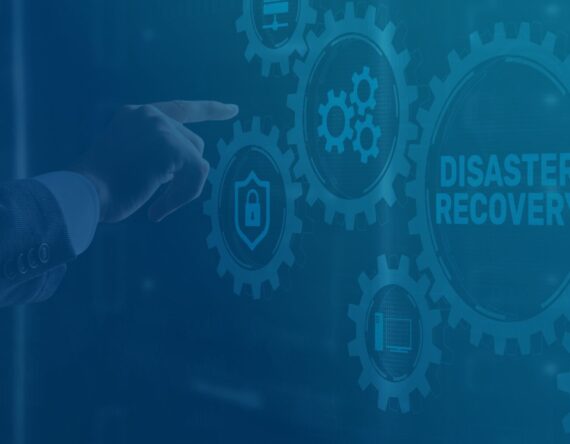This is part one in a three-part series on risk mitigation and disaster recovery. Read part two here and part three here.
Business leaders and risk managers should always be prepared for the worst.
As of October 11, 2023, the United States already experienced 24 separate “billion-dollar” weather and climate disasters in the calendar year, according to NOAA. These disasters include, but are not limited to, hurricanes, tornados, wildfires, and winter storms–all of which required extensive reconstruction efforts to restore commercial properties, residential properties, and infrastructure. With such events resulting in catastrophic loss to property and infrastructure, proactive disaster preparedness is critical. According to FEMA, nearly 25% of businesses do not reopen after a natural disaster, a statistic that should sound the alarm for organizations to ensure recovery is possible.
Even when an organization is slated to recover, the process to get there moves fast and furious. Mistakes are made when pushing forward quickly, opportunists seek their time to strike under the guise of critical assistance, and often, guards are down when resources are stretched thin.
It can often feel like the facts are stacked against organizations. The good news? There are multiple steps entities can take before, during, and after a natural disaster to mitigate business disruption and prevent fraud, waste, and abuse (FWA). Organizations have the opportunity to prepare now to filter out illicit actors and FWA.
Before – Proactive Strategies for Organizations to Mitigate the Impact of Natural Disasters
The old adage is right, “an ounce of prevention is worth a pound of cure.”
As the frequency and severity of natural disasters continue to rise, organizations face increasing risks to their operations, resources, and revenue. The consequences of unpreparedness can be crippling, making it crucial for entities to take proactive measures to safeguard against these threats. Fortunately, there are comprehensive strategies to help prepare organizations and safeguard systems before a natural disaster strikes.
Create a Business Continuity Plan as a Baseline
One of the foundational steps in disaster preparedness is the creation of a Business Continuity Plan (BCP). A BCP helps businesses identify critical functions and resources, formulate recovery strategies, and establish a dedicated team to manage disruptions.
The type of industry an organization is in and the physical structure from which they operate will dictate what kind of plan you need. For example, a coastal based law firm operating after a hurricane can transition to remote work to serve clients. This will be very different from a hotel chain, which requires people to be on site to function—both customers and staff. A resort or hotel may not have the bandwidth at a partner location to accommodate guests as fulsomely or as quickly as they need.
This kind of a plan cannot sit on a shelf, collecting dust until it is needed in action. Regular training and testing of this plan, including tabletop exercises, ensures its effectiveness when disaster strikes.
Conduct a Risk Assessment and Dependency Mapping
Understanding the specific risks that could impact your operations and assets is essential. Organizations should conduct a thorough risk assessment to tailor disaster preparedness efforts. This involves identifying the types of disasters most likely to affect your entity and understanding how each could impact critical facets such as operations, resources, property, and supply chains.
Dependency Mapping is a thorough tool to assist in identifying processes your organization relies on and develop contingency plans and alternate solutions if these resources are disrupted or unavailable during and after a disaster. Plan to perform a risk assessment annually, as well as any time that business changes or risks are identified, to ensure that the assessment is up-to-date and relevant prior to a disaster. Hazard Vulnerability Assessment Worksheets can be invaluable in this process to help quantify the risk to the entity by analyzing, for various types of hazards (e.g., tornado, earthquake, flood, etc.), the probability and severity of a given event.
Examine Vendor Prequalification and Procurement Procedures
It is important to understand what your vendors do and how they work. Think about when your heat goes out in your home on a snowy day: if you are flipping through the phonebook, you are already behind. For businesses, the same is true. Have an emergency response company ready to go, and a back-up, so you’re not scrambling when something goes wrong, particularly during a period when they will be in be high demand. While emergency response may not be needed right away, ensuring you have vetted resources and vendors such as electricians, plumbers, and other specialty providers to mitigate, secure and eventually rebuild the business will also be an important component of a smooth, and risk averse, reconstruction of your asset.
Moreover, an organization may want or need federal assistance to help recover from a qualified natural disaster. For example, for a business to be eligible to receive FEMA grants, it must have procurement procedures that comply with federal, state, and tribal laws. Some of these requirements include, but are not limited to, pre-screening vendors, having contracts in place, and maintaining a pre-qualified list of vendors with reasonable prices, quality goods and services, and financial integrity. This helps enable quick access to essential resources during and after a disaster, minimizing revenue loss. Furthermore, procurement guidelines from FEMA are a valuable resource for this step, providing guidance regarding the mandatory requirements for FEMA award recipients and subrecipients using federal funding to finance the procurement of property and services.
Determine Appropriate Insurance Coverage
Consider investing in additional insurance coverage that goes beyond basic property and casualty insurance. Catastrophe Insurance is a type of rider that will provide additional protection and coverage for natural disasters such as floods, hurricanes, earthquakes, sinkholes, tornadoes and volcanoes that may otherwise be “excluded” with your current basic policy. Additional insurance to consider includes business interruption insurance, and business property insurance. It’s crucial to ensure that your coverage amounts are sufficient to cover potential losses, and a good practice is to periodically review coverage amounts to ensure they align with business growth or changing needs.
In a world where natural disasters are becoming increasingly common and costly, entities must take proactive steps to protect their assets. By following these comprehensive strategies, organizations can minimize disruption and safeguard their revenue. The severe consequences of unpreparedness make disaster preparedness a strategic imperative for organizations in today’s volatile environment.
Erica Levy contributed to this series.








